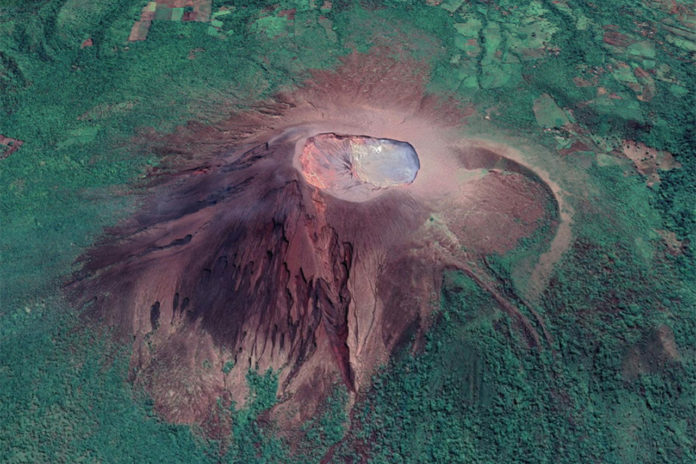Changes in volcano shape — morphology — that occur with significant ejections are quantifiable. However, background volcanic activity, showing as small volume explosions and crater wall collapse, can likewise cause changes in morphology and are not well quantified.
A group of Penn State analysts examined Telica Volcano, a determinedly active volcano in western Nicaragua, to both observe and evaluate small-scope intra-crater change related to background and eruptive activity. Geologists consider Telica ‘persistently’ active because of its high levels of seismicity and volcanic degassing, and it emits on less than 10-year periods.
Scientists used direct observations of the crater, photographic observations from 1994 to 2017, and photogrammetric techniques on photos collected between 2011 and 2017 to analyze changes at Telica in the context of summit crater formation and eruptive processes.
They used structure-from-motion (SfM), a photogrammetric technique, to construct 3D models from 2D images. They also used point cloud differencing, a method used to measure change between photo sampling periods, to compare the 3D models, providing a quantitative measure of the change in crater morphology.
Cassie Hanagan, the lead author of the study, said, “Photos of the crater were taken as part of a multi-disciplinary study to investigate Telica’s persistent activity. Images were collected from our collaborators to make observations of the crater’s features such as the location and number of fumaroles or regions of volcanic degassing in the crater. For periods that had enough photos, SfM was used to create 3D models of the crater. We could then compare the 3D models between periods to quantify change.”
Scientists used SfM-derived 3D models, and point cloud differencing allowed the team to quantify how the crater changed through time.
Peter La Femina, associate professor of geosciences in Penn State’s Department of Geosciences, said, “We could see the changes by visually looking at the photos, but by employing SfM, we could quantify how much change had occurred at Telica. This is one of the first studies to look at changes in crater morphology associated with background and eruptive activity over a relatively long time span, almost ten years.”
Scientists then compared Telica’s morphological changes to the timing of eruptive activity to investigate the processes leading to crater formation and eruption.
Volcanoes erupt when pressure builds beyond a breaking point. At Telica, two mechanisms for triggering eruptions have been hypothesized. These are widespread mineralization within the underground hydrothermal system that seals the system and surficial blocking of the vent by landslides and rockfall from the crater walls. Both mechanisms could lead to increases in pressure and then eruption, according to the researchers.
Hanagan said, “One question was whether or not covering the vents on the crater floor could cause pressure build-up, and if that would cause an explosive release of this pressure if the vent were sufficiently sealed.”
Comparison between point cloud differencing results and the photographic observations show that vent infill by mass wasting from the crater walls was not likely a primary mechanism for sealing of the volcanic system before an eruption.
La Femina said, “We found that material from the crater walls does fall on the crater floor, filling the eruptive vent. But at the same time, we still see active fumaroles, which are vents in the crater walls where high-temperature gases and steam are emitted. The fumaroles remained active even though the talus from the crater walls covered the vents. This suggests that at least the deeper magma-hydrothermal system is not directly sealed by landslides.”
Scientists also noted that crater wall material collapse is spatially correlated to where degassing is concentrated, and that small eruptions blow out this fallen material from the crater floor. These progressions support a crater shape like other summit craters that framed by collapse into an evacuated magma chamber.
La Femina said, “What we found is that during the explosions, Telica is throwing out a lot of the material that came from the crater walls. In the absence of magmatic eruptions, the crater is forming through this background process of crater wall collapse, and the regions of fumarole activity collapse preferentially.”
The study was done in collaboration with Mel Rogers, an assistant research professor at the University of South Florida. Hanagan, now a graduate student at the University of Arizona, completed this research as part of her Schreyer Honors College honors thesis and Department of Geosciences senior thesis.
Journal Reference:
- Catherine Hanagan et al. Changes in Crater Morphology Associated With Volcanic Activity at Telica Volcano, Nicaragua. DOI: 10.1029/2019GC008889
